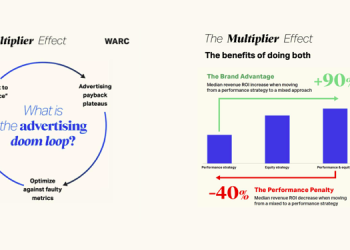The rising importance of voice technology, improvements to measurement, and the emergence of Amazon as an ad platform is driving growth and change in search marketing, concludes WARC, the global authority on advertising and media effectiveness, in its Marketer’s Toolkit 2019.
While information-seeking, transactions and navigation remain the three core activities of search, the landscape is changing fast.
Advertising spend for paid search has trebled over the past decade and is expected to account for over a fifth (21.9%) of the total in 2018. Across WARC’s 12 key markets – Australia, Brazil, Canada, China, France, Germany, India, Italy, Japan, Russia, UK , US – spend for paid search is forecast to rise 11% in the last year, topping $100bn.
This growth is driven, in part, by the confidence with which brands can measure the outcomes of search marketing. In WARC’s Marketers Toolkit survey, 36% of respondents claimed they can measure the effectiveness of online search “very accurately”, more than any other media channel. However, there is also a growing realisation that search can now play a valuable role in delivering brand experience and inspiration.
Brands are especially enthused by the potential for voice search. Some 29% of clients taking part in the Toolkit survey cited voice as the emerging technology they most expect to be important in 2019, an increase of 12 percentage points on the result from a year ago.
When asked about the application of voice technology in marketing plans, 40% selected voice-optimised search, ahead of content (25%), commerce (20%) and advertising (11%).

Nate Shurilla, APAC Head of Innovation and North Asia Commerce, iProspect, says: “The more pronounced trend is around voice. In 2018, iProspect conducted research on voice adoption in six key markets across APAC: China, Japan, India, Indonesia, Singapore and Australia. The results were eye-opening. Our research found that 82% smartphone users in India, 77% in China and 62% in Indonesia are currently using voice-activated technology.”
Visual search, meanwhile – defined as anything using an image, rather than text, as the search input – is growing facilitated by smartphones and is already changing the search landscape, particularly among younger audiences, leading to a shorter path to purchase for brands.
Key findings around search from WARC’s Marketer’s Toolkit 2019 survey reveal that:
Search is being transformed from a channel dedicated to information into one that can also deliver inspiration. Brands should re-consider how they deploy search spend and to use it across the path to purchase.
Amazon now represents an important part of search strategies. It offers brands unique opportunities to expand their audience but demands a specific creative approach to search. 69% of respondents to WARC’s Marketer’s Toolkit survey said they plan to increase investment in Amazon in 2019.
More than any other platform, voice demands that you achieve the top listing as audiences will not “scroll” through. Using natural language keywords and learning how your audience thinks about the category is key.
Visual search is an attractive proposition for an increasingly visual consumer culture. Searching for products through image capture is intuitive, engaging and a very neat fit with social media behaviour.

Summing up,Alex Brownsell, Senior Editor, Media at WARC, comments: “The disruptive power of Amazon, the switch to conversational-style language, and the growth of voice and visual technology are converging to drive the biggest change to search behaviour since the first software began mapping the web a quarter of a century ago.”
The diversification of search is one of the three themes explored in-depth in WARC’s Marketer’s Toolkit 2019. A free PDF sample of the report is available to download here: https://content.warc.com/download-the-diversification-of-search-sample-from-warc

















